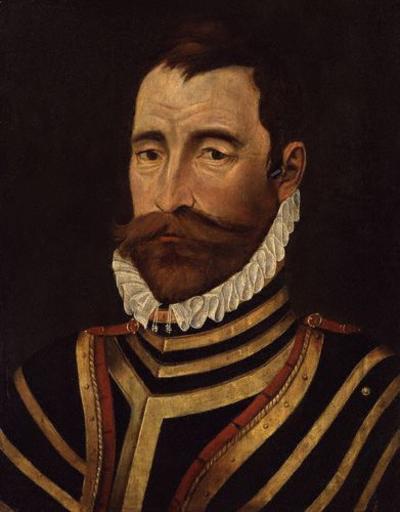MAKE A MEME
View Large Image

| View Original: | Sir_William_Drury.jpg (391x500) | |||
| Download: | Original | Medium | Small | Thumb |
| Courtesy of: | www.flickr.com | More Like This | ||
| Keywords: london, st martin's place, wc2 0he londonstmartinsplacewc20he united kingdom unitedkingdom portrait people indoor by Unknown artist,painting,probably 16th century Sir William Drury, Knt., (October 2, 1527 – October, 1579), English statesman and soldier, was a son of Sir Robert Drury of Hedgerley in Buckinghamshire, and grandson of another Sir Robert Drury (died 1536), who was speaker of the House of Commons in 1495. He was born at Hawstead in Suffolk, and was educated at Gonville College, Cambridge.[1] Fighting in France, Drury was taken prisoner in 1544; then after his release, he helped Lord Russell, afterwards Earl of Bedford, to quell a rising in Devonshire in 1549, but he did not come to the front until the reign of Elizabeth. In 1559, he was sent to Edinburgh to report on the condition of Scottish politics, and five years later he became Marshal and deputy-governor of Berwick-upon-Tweed. He was a close observer of the affairs of Mary Queen of Scots and her house-arrest in Loch Leven castle, and was in constant communication with Lord Burghley and wrote to him on 3 April 1568 regarding her escape from that place on 25 March about which he gave a full account. Again in Scotland in January 1570, it is interesting to note that the regent James Stewart, 1st Earl of Moray, was proceeding to keep an appointment with Drury in Linlithgow when he was mortally wounded, and it was probably intended to murder the English envoy also. After this event, Drury led two raids into Scotland; at least thrice he went to that country on more peaceable errands, during which, however, his life was continually in danger from assassins; and he commanded the force which compelled Edinburgh Castle to surrender in May 1573. In 1576, he was sent to Ireland as president of Munster, where his stern rule was very successful, and in 1578 he became Lord Justice to the Irish Council, taking the chief control of affairs after the departure of Sir Henry Sidney. The Second Desmond Rebellion had just broken out when Sir William died in October 1579. Drury's letters to Cecil, and others, are invaluable for the story of the relations between England and Scotland at this time. Sir William Drury married (as her second husband) Nancy Park (d.1624) daughter of Sir Thomas Wentworth, 1st Baron Wentworth of Nettlestead, Suffolk. by Unknown artist,painting,probably 16th century Sir William Drury, Knt., (October 2, 1527 – October, 1579), English statesman and soldier, was a son of Sir Robert Drury of Hedgerley in Buckinghamshire, and grandson of another Sir Robert Drury (died 1536), who was speaker of the House of Commons in 1495. He was born at Hawstead in Suffolk, and was educated at Gonville College, Cambridge.[1] Fighting in France, Drury was taken prisoner in 1544; then after his release, he helped Lord Russell, afterwards Earl of Bedford, to quell a rising in Devonshire in 1549, but he did not come to the front until the reign of Elizabeth. In 1559, he was sent to Edinburgh to report on the condition of Scottish politics, and five years later he became Marshal and deputy-governor of Berwick-upon-Tweed. He was a close observer of the affairs of Mary Queen of Scots and her house-arrest in Loch Leven castle, and was in constant communication with Lord Burghley and wrote to him on 3 April 1568 regarding her escape from that place on 25 March about which he gave a full account. Again in Scotland in January 1570, it is interesting to note that the regent James Stewart, 1st Earl of Moray, was proceeding to keep an appointment with Drury in Linlithgow when he was mortally wounded, and it was probably intended to murder the English envoy also. After this event, Drury led two raids into Scotland; at least thrice he went to that country on more peaceable errands, during which, however, his life was continually in danger from assassins; and he commanded the force which compelled Edinburgh Castle to surrender in May 1573. In 1576, he was sent to Ireland as president of Munster, where his stern rule was very successful, and in 1578 he became Lord Justice to the Irish Council, taking the chief control of affairs after the departure of Sir Henry Sidney. The Second Desmond Rebellion had just broken out when Sir William died in October 1579. Drury's letters to Cecil, and others, are invaluable for the story of the relations between England and Scotland at this time. Sir William Drury married (as her second husband) Nancy Park (d.1624) daughter of Sir Thomas Wentworth, 1st Baron Wentworth of Nettlestead, Suffolk. | ||||